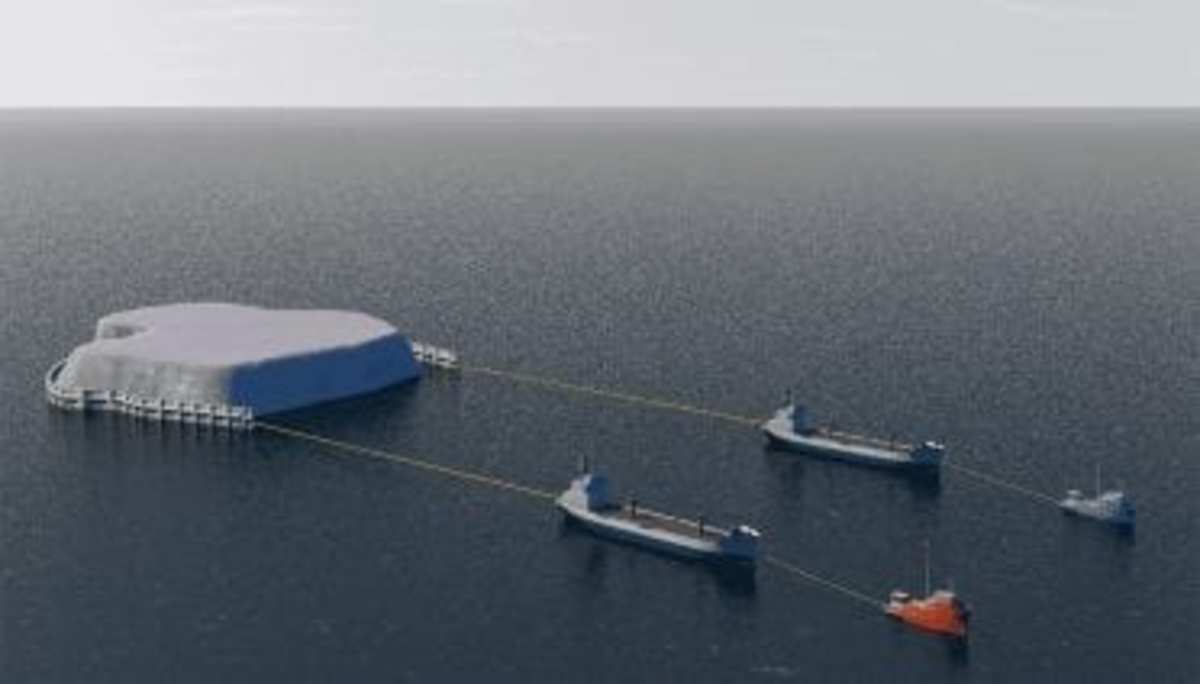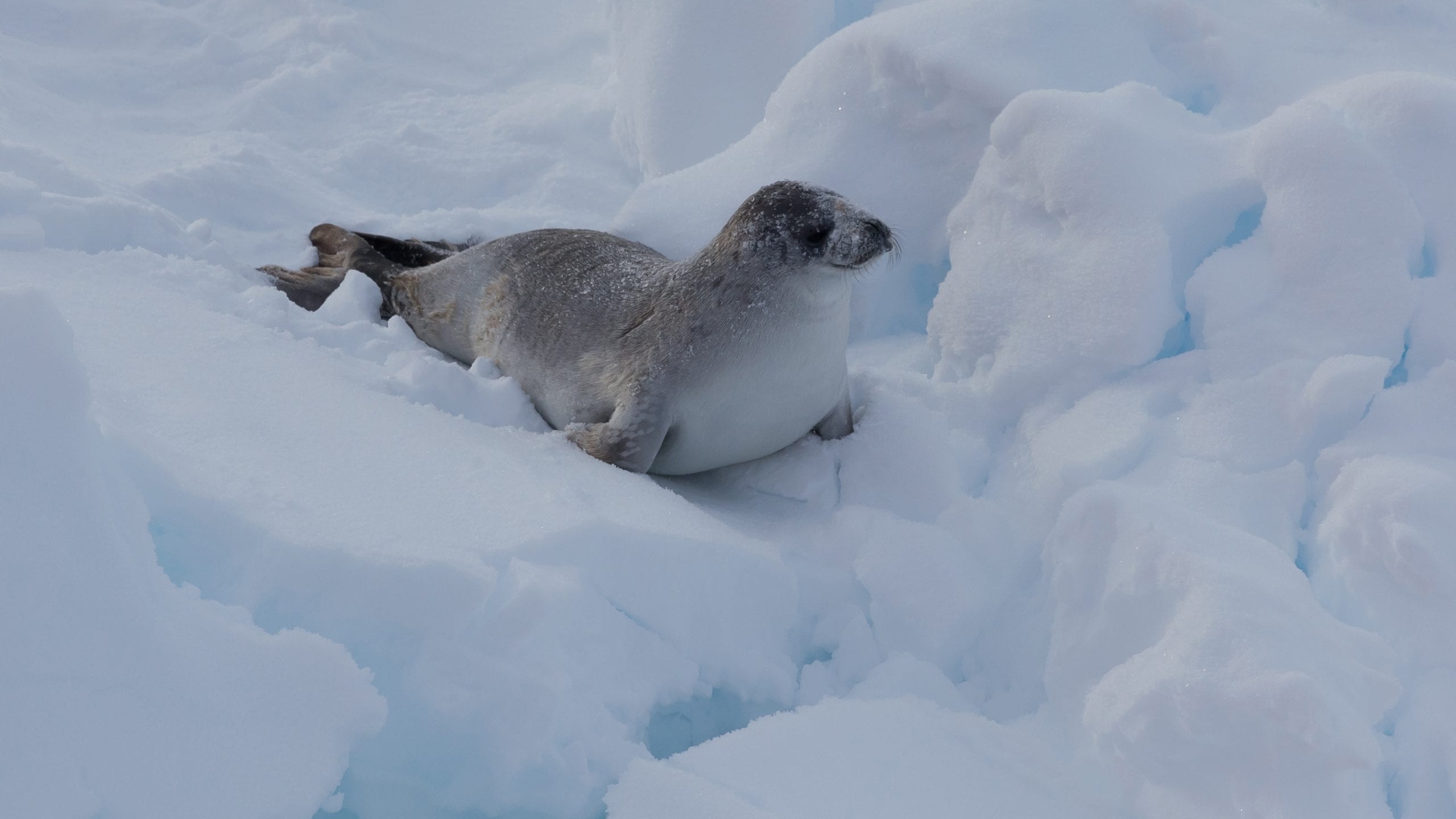PAOC Spotlights
Can icebergs be towed to water-starved cities?

Read this at WHOI
The 1.5-million-ton behemoth was on the loose.
The massive blue-tinged iceberg was headed straight for an offshore drilling platform in the Kara Sea off Western Siberia. Two smoke-billowing Russian tugs, the Almaz and Kigoriak, arrived on the scene bearing an eight-inch-thick, quarter-mile-long tow rope. Almaz took one end, Kigoriak the other, and moving in painstaking synchrony, the tugs formed a lasso around the floe. They dragged it slightly off course, where the Arctic currents took over.
The tugs’ efforts prevented a disastrous and costly collision. But nudging an iceberg is one thing; moving one thousands of miles is another.
It may sound like science fiction, but it’s something WHOI geologist Alan Condron has been thinking about a lot lately. He’s been studying the possibility of towing an iceberg from Antarctica to Cape Town, South Africa, which recently experienced a water crisis.
“Large icebergs could be used to alleviate drought and supply a city with water,” Condron says. “One of the nice things is you wouldn’t have to treat the water with chemicals. It’s pure and fresh.”
The big tow
Researchers have floated the idea of long-distance iceberg towing for decades. In 1973, the RAND Corporation even developed an 83-page report for the National Science Foundation titled “Antarctic Icebergs as a Global Freshwater Resource.”
Nearly 50 years later, water-stressed places like the Persian Gulf, Cape Town, and Perth, Australia are still waiting for their iceberg to come in. Condron hopes their wait will soon be over. He says that with today’s sophisticated computer modeling technologies, he can accurately simulate a long-distance iceberg tow to Cape Town. “As far as I’m aware,” he says, “this is the first appraisal of the feasibility of towing icebergs using the latest iceberg and climate models.”
Simulating the real deal
How big would an iceberg have to be to quench the thirst of a city like Cape Town? Not as big as you might think, Condron says. “Amazingly, the model shows that an iceberg capable of surviving the tow can be quite small at its point of capture,” he says. Even considering the melting that might occur en route, an iceberg just 2,000 feet long and 650 feet thick would deliver enough water to Cape Town to alleviate water stress in the region for more than a year, he says. On any given day, there are thousands of icebergs this size adrift in Antarctica. “This is a fantastic result, as it also opens up the possibility that icebergs might be towed to similar regions to provide ‘on-demand’ emergency water relief.”
But there’s a catch. Condron made these calculations based on what are known as “unprotected” icebergs. These are floes that lack any insulating material, like plastic foam, which might reduce melt. Researchers have proposed mooring such bergs about 18 miles off of Cape Town in order to harvest water from them. Yet on average, these waters are a balmy 59 to 68 degrees Fahrenheit. At those temperatures, an iceberg the size of those in Condron’s study would melt away within weeks, or even days.
“If no measures are taken to reduce melt during the tow or at its delivery destination, an iceberg capable of providing Cape Town with enough fresh water for a year would need to be a staggering 3 kilometers long when it arrives,” he says. To account for water loss en route, an iceberg would thus need to start its journey from Antarctica measuring at least 5 kilometers long.
It may be hard to picture an iceberg of that size in transit to South Africa, but Condron says it’s a place to start. Now that his models have provided an estimate for the optimal size of a water-bearing berg, researchers can figure out how many ships, and what sort of ships, might be capable of dragging it. The vessels would need to overcome winds and ocean currents while barely moving at a consistent speed of half a knot. Higher speeds can create vibrations from ocean waves that fracture the rigid ice and cause it to break apart.
Of course, Condron says, if we could come up with a way to insulate the iceberg and slow melting, then it could be much smaller and thus more towable. “Iceberg towing might actually prove to be a financially viable source of water,” he says. “That is the hope at least.”
But even if the scheme proves both possible and relatively affordable, another big question looms: How would towing a massive iceberg across the Southern Ocean affect marine ecosystems?
One giant obstacle
Michelle Shero, a WHOI biologist who studies Weddell seals and other marine mammals in Antarctica, is hesitant to speculate on what iceberg towing might mean for the wildlife she studies. But she says that large icebergs that drift naturally from calving events, like the A68a iceberg currently making a bee-line for the South Atlantic island of South Georgia, can cause problems. “Iceberg calving events can block off large areas and prevent wind and currents from facilitating normal ice break-up that’s important for summer productivity,” Shero says.

One such event happened in 2000, when an iceberg bigger than Jamaica known as Iceberg B-15 calved from the Ross Ice Shelf in Antarctica and made its way into Weddell seal territory. Researchers from Montana State University investigated the impacts and found that female seals had fewer offspring during the five years when the iceberg was in their territory. “The seals need to find cracks or make their own breathing holes in the ice,” Shero says. “So, when there’s this sort of exceptional ice extent and ice is much thicker than normal, it makes it hard for them to travel back to their breeding colonies.” Importantly, Weddell seals gave birth to fewer pups during the ‘iceberg years’ but the event didn’t appear to impact survival rates.
Water temperatures collide
Calved icebergs, of course, don’t have anyone towing them. Presumably, with enough planning and information, ship operators could minimize impacts on wildlife in Antarctica. But there is still potential for trouble at the end of the journey: How might vast amounts of freezing fresh water affect marine ecosystems farther north, where habitats are warm and salty?
Condron says this is among the chief environmental concerns that would need to be addressed before a long-distance tow ever happens. “Understanding how cold and fresh an iceberg makes the water, and whether it’s something we should be worried about,” he says, “would be critical.”
If an iceberg ever sets sail from Antarctica for warmer climes, the experiment would provide an unprecedented look at the dynamics of iceberg melt, something researchers have thus far only been able to model. It would yield valuable information about a subject that is likely to become increasingly important as the climate warms, and it would be a good test of existing models. Not to mention it would be a pretty amazing spectacle. “It’s intriguing that you could move something from a polar region and suddenly be able to see it out on the horizon from a tropical beach,” Condron says. “It would be quite the juxtaposition.”
This research is funded through a WHOI Independent Research and Development (IR&D) proposal.
(Illustration by Tim Silva, © Woods Hole Oceanographic Institution)